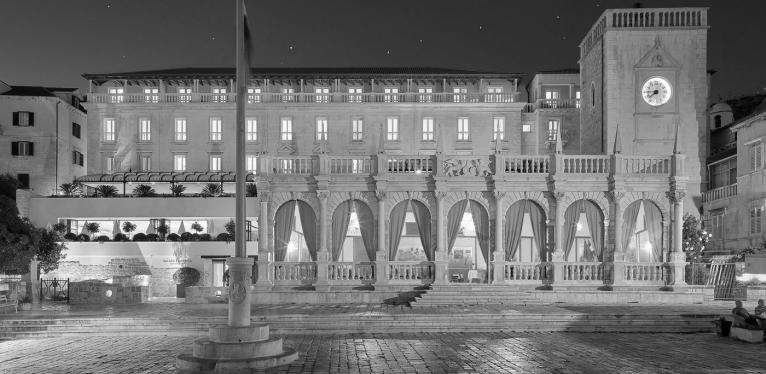

Welcome to Palace Elisabeth, the first five-star hotel in Hvar! The hotel was built in place of the residential complex of the Duke's Palace on the main town square, which is also the largest square in Dalmatia. Its greatest importance was in the period of Venetian rule, when different dukes alternated in the area, with each of them leaving their mark in the history of this place. After the fall of Venice, the palace lost its spark, became neglected and was eventually demolished at the turn of the 19th century. In its place spa hotel Empress Elisabeth (Kurhotel kaiserin Elisabeth) was built, which successfully overcame the difficulties of the past century. Commemorating centuries-old Venetian heritage that has left this city with beautiful stone monuments and the glory of Austria that helped initiate the development of tourism in a small, remote place, hotel Palace Elisabeth presents you the best of these two worlds, harmoniously blended into a unique experience on this sunny island.
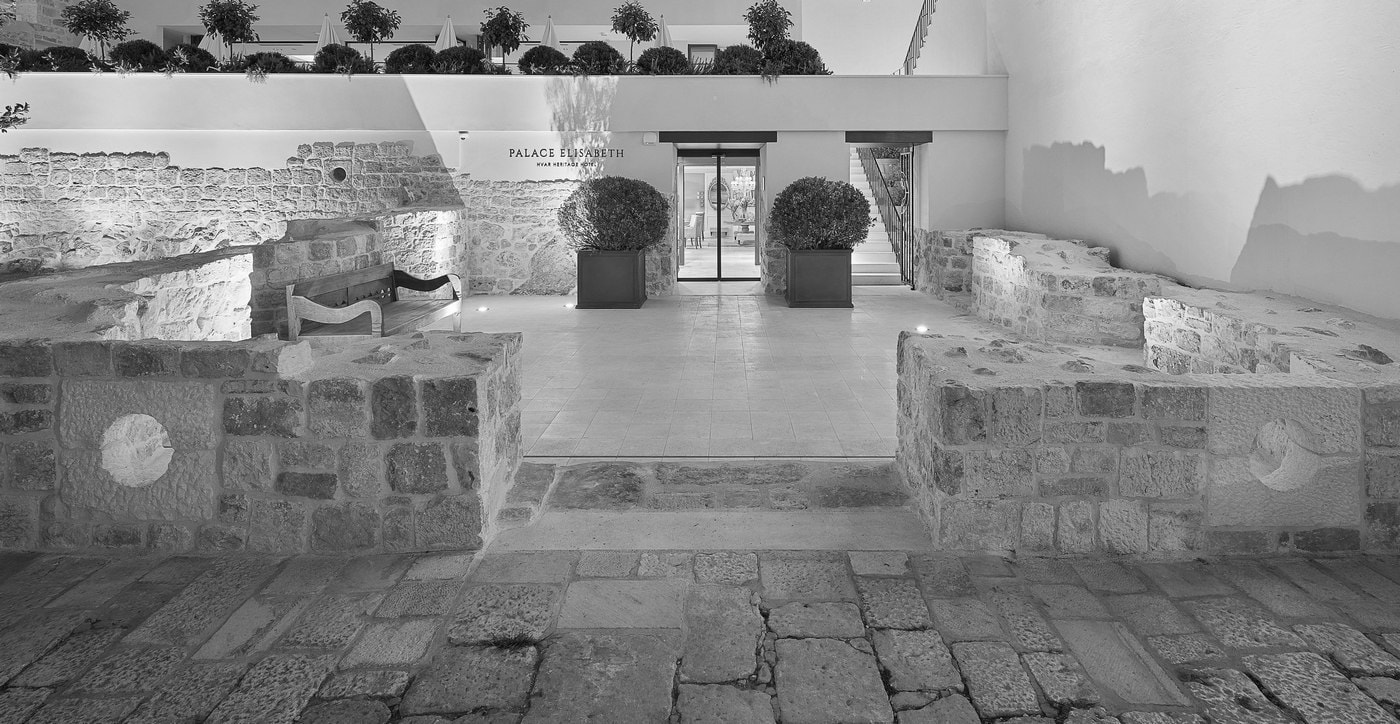
The entrance to the hotel is through an archeological site: the former southwestern part of the old city wall. There are also round cannon holes (loopholes) in the walls. This space was significant even before the Venetian rule. The early history shows that in this very place there was a villa or a residential building here - perhaps belonging to a ruler - back in ancient times.
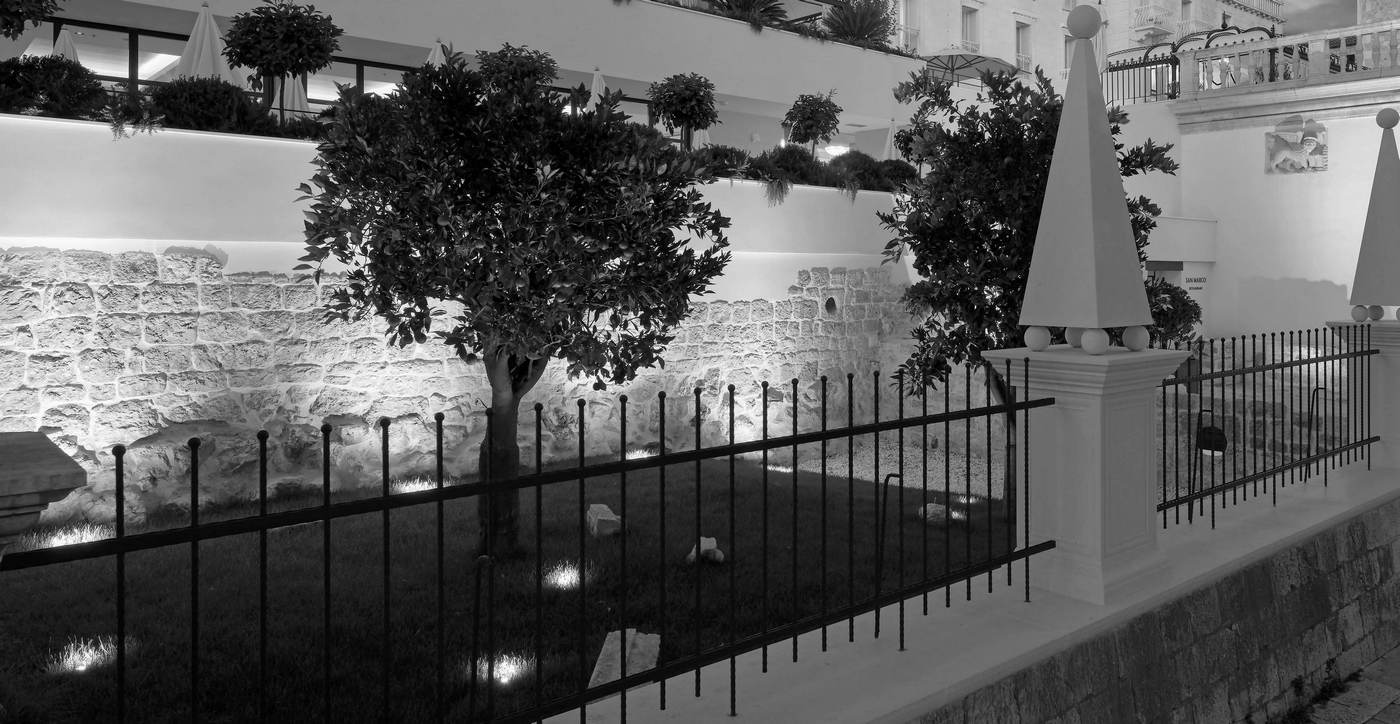
To the left of the entrance is a small Mediterranean garden with wild orange trees; since archaeological excavations have found traces of orange seeds in this very spot. Centuries of history are right under your feet. Hvar has long been an important maritime hub and a safe harbor for ships that needed to find protection on the often whimsical and unpredictable sea. Here, you can find stairs dating back to the 2nd or 3rd century, probably what was once a formal entrance to a monumental building, perhaps a residence belonging to an important figure in that time.
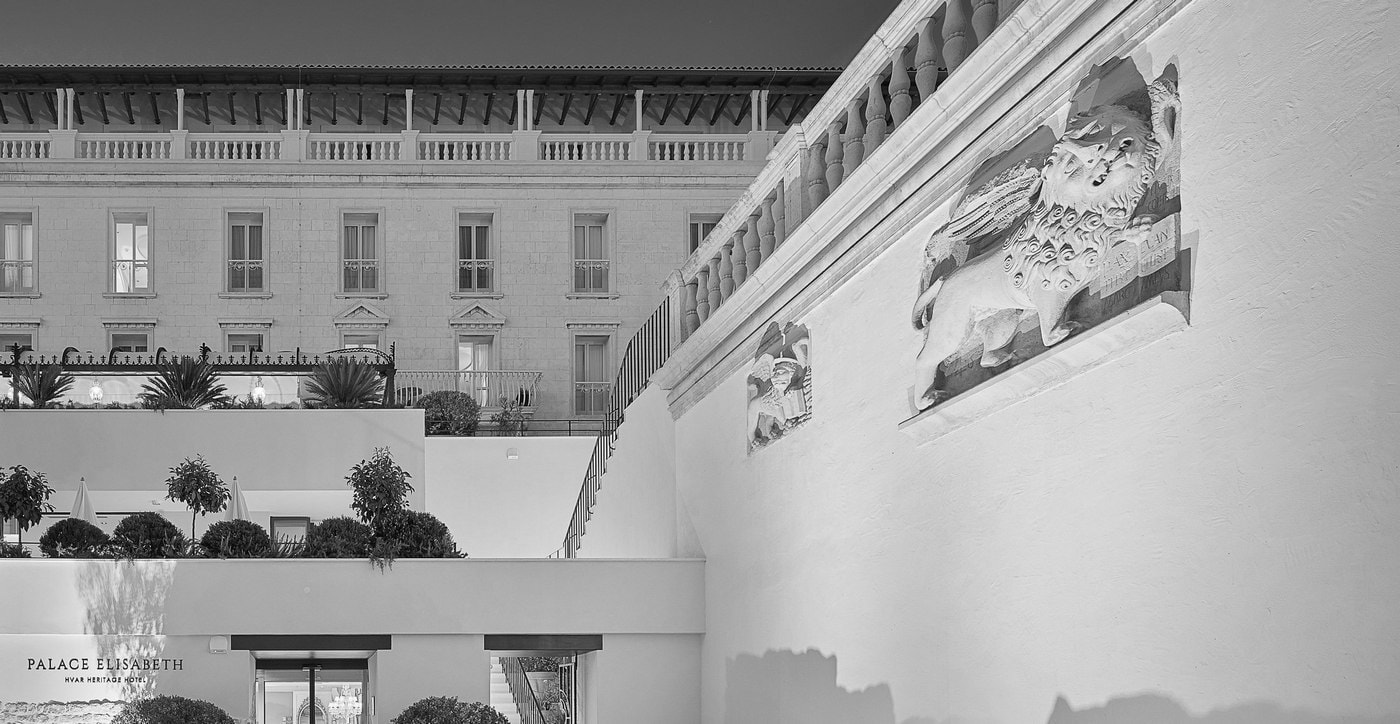
There are two stone lions at the entrance of the hotel, which are symbols of Venetian authority. Given that the Duke’s Palace was the center of the government, it is no wonder that this is where a large number of stone lions are located. The larger lion is the oldest preserved one in Hvar. It was put there by the Duke of Hvar, Francesco Giusti in 1462. on the so-called upper Duke’s palace. Its original location can be seen on old photographs. This lion is similar to an ox or a dog, but it should be taken into consideration that artists of that time never saw a real-life lion. The smaller lion, made in 1483., used to be located on the so-called. lower Duke’s palace, which was in place of today's entrance to the hotel. An unknown stonemason exceptionally displayed the symbol of the Venetian rule with veins on his legs and human features. His front paws are placed on land and his back paws are placed in the sea, symbolically showing land and sea properties of the mighty Republic of Venice - Stato da Terra and Stato da Mar.
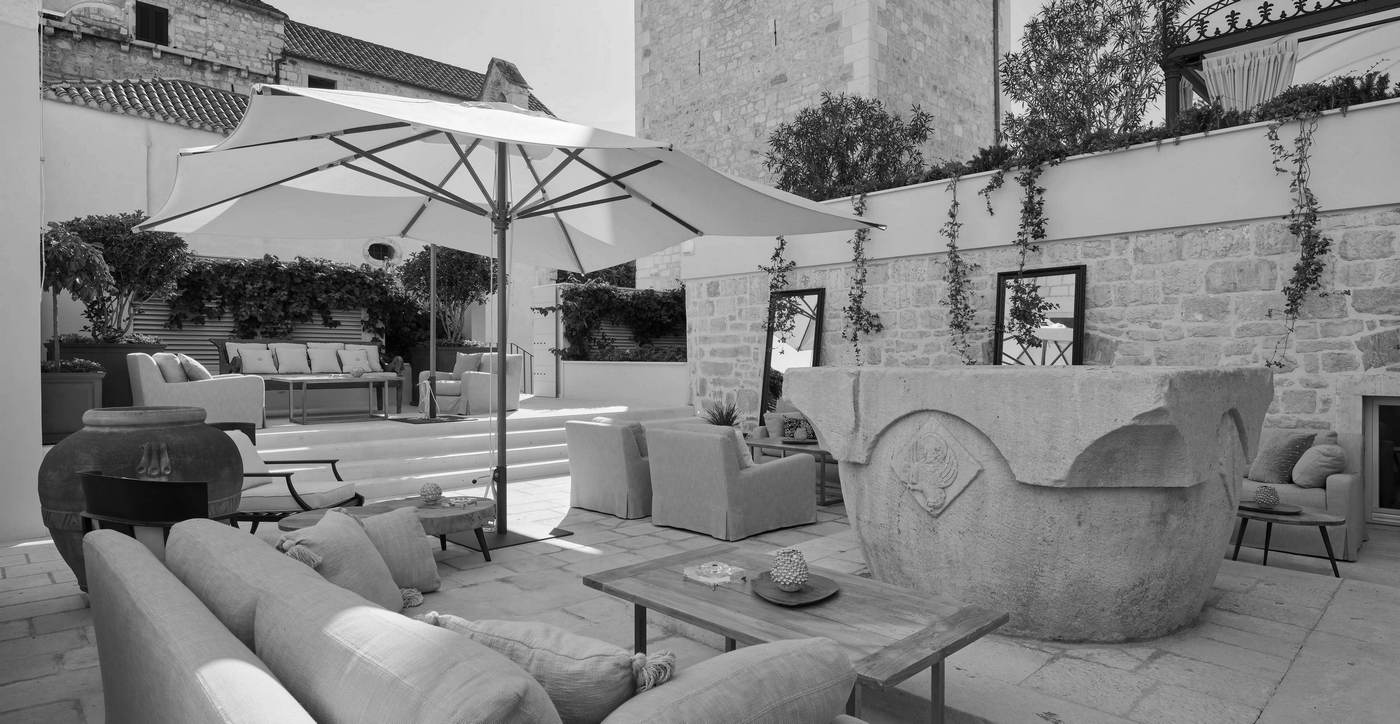
On the hotel lounge terrace, on the same level as the swimming pool, there is a well that used to beautify the courtyard of the Duke's Palace. It is one of the largest wells located in private houses, 172 cm in diameter. The top of the well has winged lions with a book, symbols of the Venetian rule, and the figure of St. Stephen, pope and martyr, patron saint of the town of Hvar.
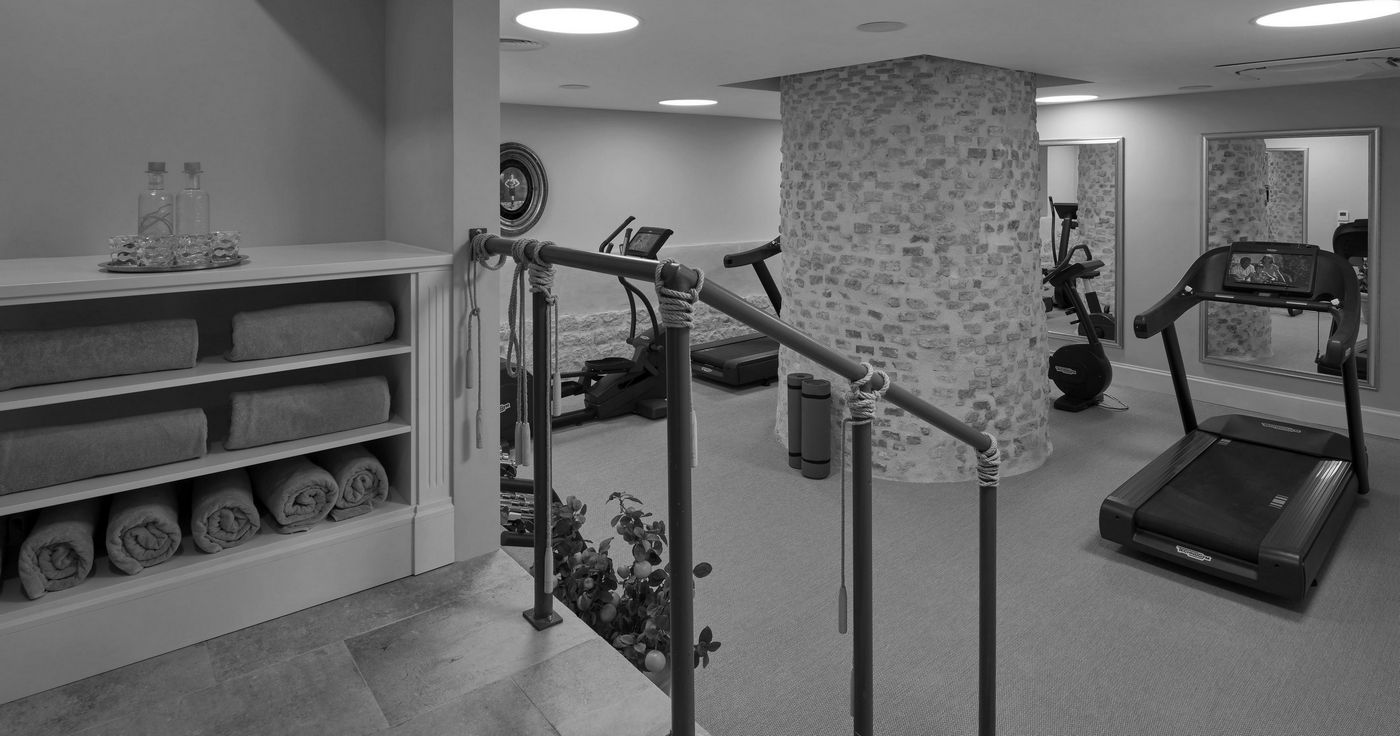
The hotel’s gym area is located below the well. This area includes the well’s water filter, which is one of the oldest preserved on the Adriatic coast.
At the spa and gym entrance there is a dark stone panel, which is the lintel of the Chapel of the Lady of Sorrows, which was located in the central building of the Duke's Palace. In the middle of the lintel is the Virgin Mary and the Latin inscription UNICA LUX - MEMENTO MEI (translated: Only Light - Remember Me) and crosses with the abbreviations IC XC (Jesus Christ). The chapel was built by Duke Pietro Semitecolo, founder of the theater, renovator of all significant city buildings and the Duke's Palace. In honor and memory of him, one of the hotel rooms is named after him.
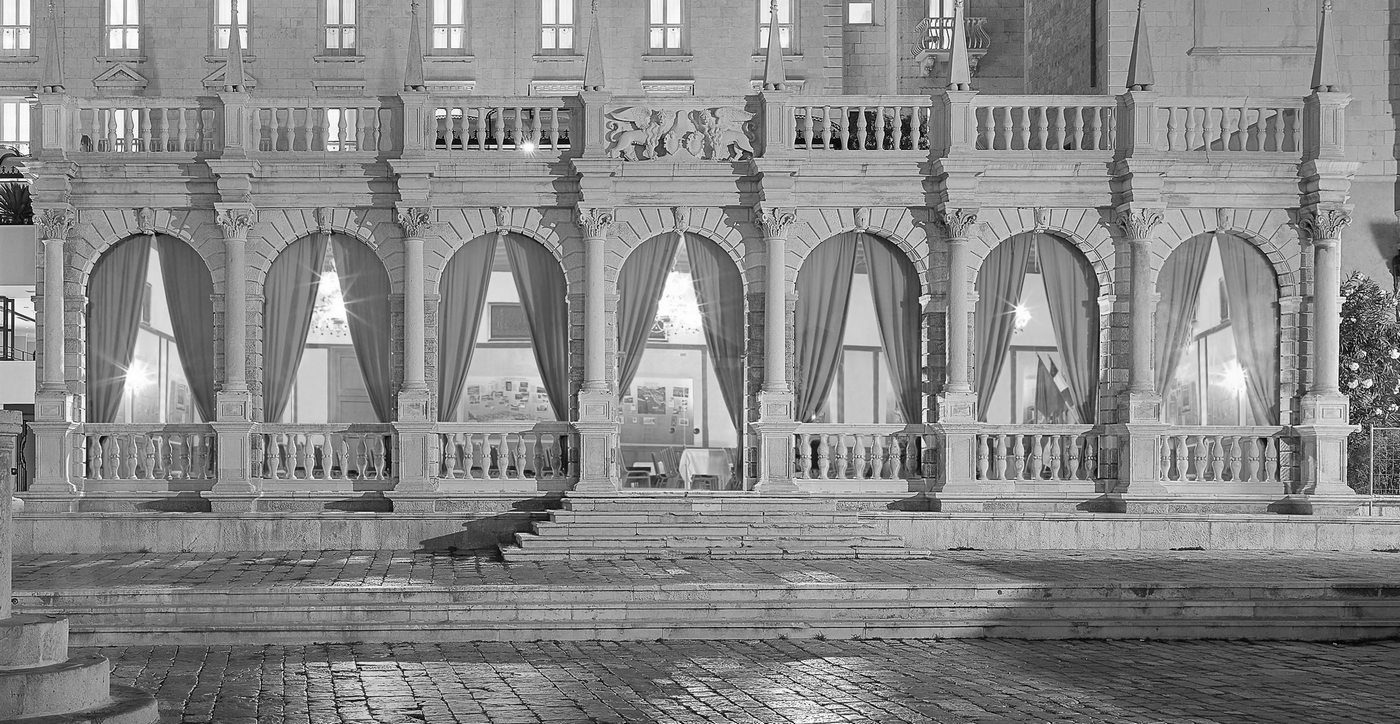
Almost every place on the Adriatic coast and islands had a town hall - a closed space where important people made important decisions and discussed numerous topics. The Hvar Loggia was first mentioned in 1289, but its appearance then is unknown. The new Loggia, built on the same place as the current one, was completed only after the Hvar Rebellion (1510-1514), during the time of Duke Viktor Diedo, and for some time it was called Diedo’s Loggia. It was completely demolished during the Ottoman march in August 1571 and it takes its final appearance at the beginning of the 17th century, thanks to Tripun Bokanić, a young and talented builder from the nearby island of Brač. Throughout its history, it served as a public courtroom, auction space and warehouse. After the founding of the Hygienic Society in 1868, one of the first tourist societies in Europe, the Loggia became a kursalon - a place for citizens to gather and socialize.
Today, the Loggia attracts attention with its harmonious arches and warm stone color, but in the past, it was decorated with different colors, whose traces were not erased by centuries of Hvar sun. The top of the arches have carved human heads and according to the city legend, these were representations of convicted leaders during the Hvar Rebellion that were set up to reprimand the Hvar people. However, there are also four female characters who definitely could not have been revolutionaries in the bloodiest period of Hvar history. On the last eastern arch there is a depiction of a young man with no wrinkles – east, as a symbol of the beginning of life and youth. Above the entrance there is a figure of a bearded older man with a crown on his head. This crown symbolizes the astrological regnum - the kingdom, the tenth field found in the solar zenith. On the last arch on the west side of the Loggia, the figure of a bearded, old man with a hat is a symbol of departure, sunset, and the near end of life.
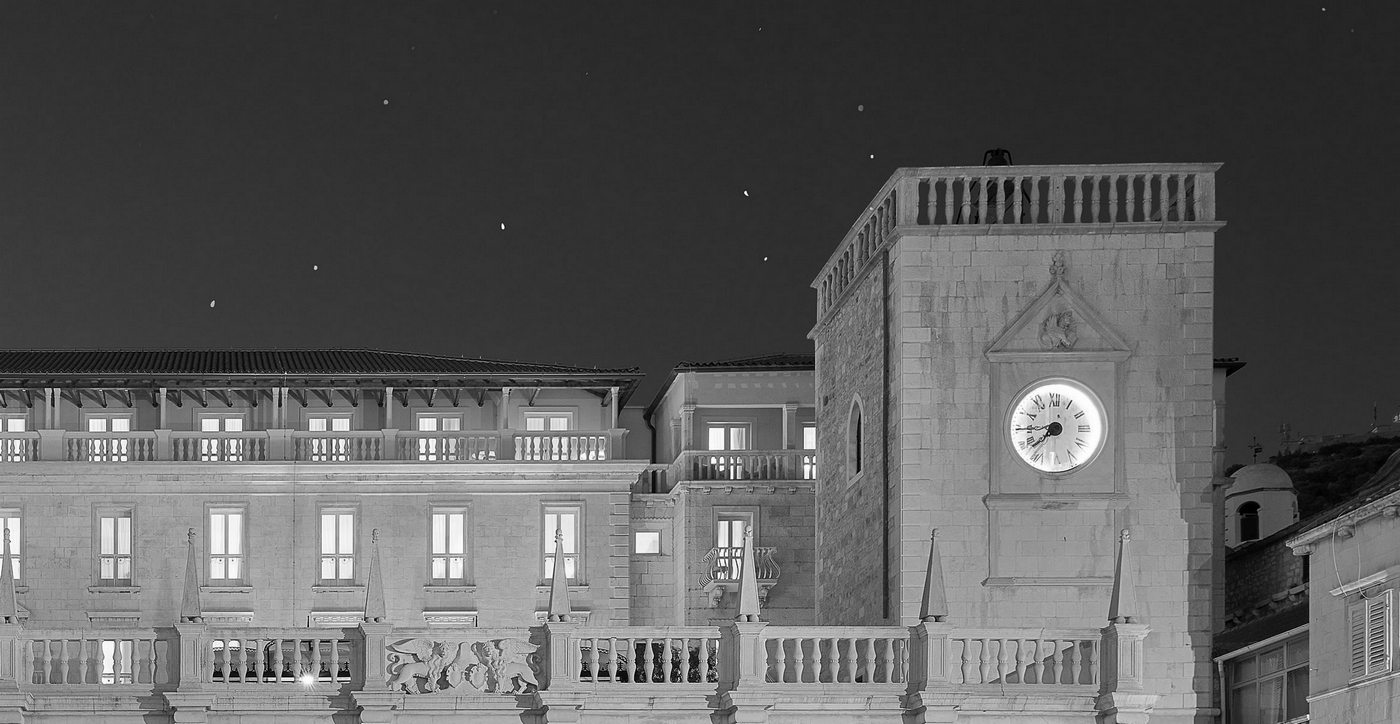
The clock tower is adjacent to the Loggia and in Hvar it is known by the local name Leroj (clock). In fact it is a medieval square tower within the southwestern edge of the city walls, which became the city’s public clock in the 15th century. A century later, Leroj received a bell decorated with religious motifs, which is located at the top of the tower and until recently, it was used to tell time.
Church of St. Cosmas and Damian is located east of the hotel building and is the oldest preserved church in Hvar. It is in between the city wall and the surrounding houses/palaces. It was built around 1430 after a series of plague epidemics that ravaged Hvar. It is dedicated to the brothers Cosmas and Damian, doctors, protectors of all evil. Contrary to church tradition, it was facing south (not east as usual) because it was thought that the plague was coming from the south, from the sea. The church inventory has been taken to other churches in the city due to renovation. Due to its simplicity and intimacy is the ideal space for weddings, baptisms and other occasions.